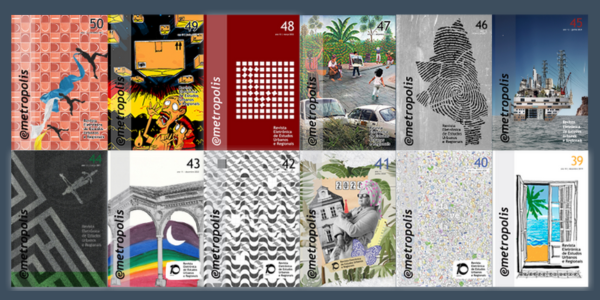The review of the e-book Transition in Bus Transport Regulation in the City of Rio de Janeiro, by geographer Igor Pouchain Matela.
The starting point of the book is the year 2010, when for the first time in history the municipal government of Rio de Janeiro held a public tender for the private concession of its entire bus transport system. Thus, Matela seeks to show that this initiative is part of the process of neoliberalization of Brazilian cities and does not represent a rupture, but rather a regulatory transition to a new cycle of accumulation in the sector.

Transition in bus transport regulation in the city of Rio de Janeiro
In 2010, for the first time in history, the municipal government of Rio de Janeiro held a public tender for the private concession of its entire bus transport system. The justification for this measure was that the current decades-old model of permits for companies to operate bus lines hinders the system’s organization and rationalization, encouraging cut-throat competition among the various means of transportation operating in the city, at the expense of integration.
To this end, the city was divided into five regions, called Regional Transport Networks (RTRs). Each region was granted to a different consortium. The intention of delimiting an exclusive region of operation for each bid-winning consortium was to put an end to territorial competition among bus companies. The rationalization of bus lines (understood as matching passenger demand to bus supply) would help to reduce the cost of companies and, consequently, bus fares.
The winning consortia would also operate the future Bus Rapid Transit (BRT) lanes between Barra da Tijuca and Galeão International Airport (TransCarioca); Barra da Tijuca and Santa Cruz (TransOeste); Recreio and Deodoro (TransOlímpica); and Deodoro and Santos Dumont Airport (TransBrasil).
The comprehensive concession of the bus transport system, with the relationship between city government and bus companies governed by a public, fixed-term contract, indicated a major change in transport policy in Rio de Janeiro, its importance directly related to the predominance of this means of transportation in the overall public transport system of the metropolis.
This paper aims to analyze to what extent the process of reorganizing bus transport in the city of Rio de Janeiro is linked to the overall urban transformations in progress in the city and how the redefinition of a coalition of interests aiming at urban accumulation implies changes/continuities in municipal transport policy.
An analysis of the history of urban transport in Rio de Janeiro over the 20th century reveals development cycles with repeating patterns, incorporating changes arising from new institutional and political conditions, among others. The current changes would therefore be part of a process consisting of cycles of crises, restructurings and reorganizations founded on new bases and new conditions.
Briefly, the Estado Novo period (1930-1945) was marked by a more centralized control over public transport. This was characterized by the predominance of rail transport directly organized by the state, in the case of trains, and by the monopoly of Light, a company of foreign ownership, over the operation of trams. Buses played a secondary role and state regulation restricted the proliferation of companies.
The crisis in the sector during World War II due to increased fuel costs and difficulties to import parts and transport materials helped to create conditions for restructuration as of 1945. The end of the war brings a liberalizing policy shift to the sector. The new government encourages the expansion of transport supply and services grow in an exponential and fragmented way, especially with the emergence of jitneys, with fierce competition among the different means of transportation (trams, trains, buses, jitneys). The jitneys end up prevailing and disrupting the previous model of centralized control. Moreover, they drive the transition to the road model of public transport.
This model of open competition is once again restructured by the state between 1958 and 1967 through measures that forced the concentration of capital, fostered the emergence of new bus companies and created the foundations for a new organization of the sector, lasting from the late 1960s to the 2010 concessions. The new mode of organization established over the period is based on road transport, the legal status of permits, and larger bus companies, organized into an employers’ association (Fetranspor) with increasing political power.
The regulation of the sector is based on the concession of privileges, in a patrimonial relationship with the state: assurance of profitability through spoliating mechanisms of accumulation and the reservation of spaces of accumulation by preventing the entry of new operators.
In the second half of the 1990s, this organization model starts showing signs of exhaustion. The advance of informal transport and the large increase in individual transport lead to constant declines in passenger demand for bus companies.
The prevailing liberal perspective diagnoses this moment of crisis as resulting from the sector’s lack of efficiency and competitiveness. State protectionism had prevented the development of a competitive environment among transport companies, hampering the modernization of the sector. Therefore, a new mode of organization was in order.
The solutions should arise from the introduction of elements of competitiveness in the sector, necessarily involving a new relationship between government and companies that would redefine their respective authorities and enable the companies to organize their operations according to changing market circumstances (i.e., greater private planning and organization of transport). This is the context of the regulatory changes of the early 21st century, marked by the comprehensive concession of the bus transport system introduced in 2010.
Based on that perspective, this paper highlights the changes and continuities in the emergence of a new development cycle in the sector.
Among the main continuities are: a) reserved spaces of accumulation – the same companies that already operated the city’s bus transport won the tender, which defined a long term of concession (20 years renewable for another 20); b) accumulation by spoliation – the forms of spoliation have been readapted, but are still based on state guarantee, via “distorted” mechanisms, of higher profitability than could be derived exclusively from economic activity; c) information control – bus companies reinforce control over transport system information by restricting access and inspection by civil society and public authorities in their different spheres; d) corporate structure – capital concentration in a few dominant corporate groups is another aspect preserved in the new model of operation by consortia.
In turn, the main trends of change include: a) strengthening of dominant groups – in the sense of greater centralization of power in decision-making and control of politics and the municipal transport system, specifically through Fetranspor; b) business modernization – BRT emerges as a new, more streamlined means of transportation, which enables the organizational and operational modernization of bus transport; c) expansion to other means of transportation – the creation of holding companies focused on transportation-related businesses (terminal management, advertising, electronic ticketing) and equity interests in other concessions (ferries, VLT), indicate a capital expansion strategy of these groups, which now operate in a number of businesses connected to public transport.
Therefore, the changes in the historically private bus transport model can be analyzed in the context of neoliberalization. Various forms of capital coexist in the same space and support each other. The old mercantile capital of bus companies is linked to new forms of urban accumulation of national and transnational capitals. This represents a conservative reconfiguration and modernization of the model. The concession is not the actual transition, but part of this important process. Through the concession, the state creates the institutional and organizational foundations which allow the companies to impose their rhythm and dynamics of modernization and transition. Control of the process is in the hands of the private sector and its logic, conditioned by organizational imperatives and business strategies. This restructuring process is believed to be adjusting the sector and creating a new organization for the conditions of a new cycle of accumulation/development.
Dossier What Is at Stake in these Games? 2016 Olympics and the Commodification of the City of Rio de Janeiro.
Publicado em Produção acadêmica | Última modificação em 04-08-2016 19:27:56










